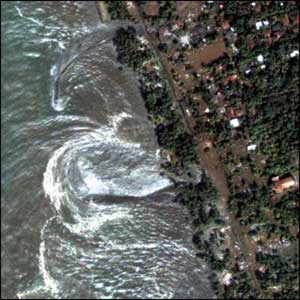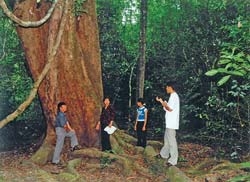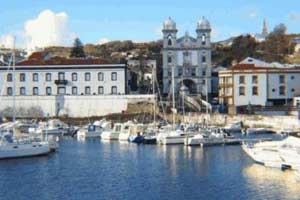Five months after the tsunami disaster in South Asia, scientists have discovered a “dead zone” at the epicenter of the earthquake that struck on December 26, 2004.
 |
|
Satellite image of the tsunami |
The “dead zone” was found after scientists conducted an “expedition” over 11 hours in an area located 4 km below the surface of the Indian Ocean.
The investigative team was astonished to find no signs of life in this location. Surrounding the earthquake’s epicenter was a fracture approximately 1,000 meters long at the ocean floor, where an eerie silence prevailed. The scientists’ submersible scanned the area, but there were no indications of living organisms.
Professor Ron O’Dor from Dalhousie University in Nova Scotia, Canada, one of the members of the Marine Life Survey project, stated: “The deep sea is typically home to many living organisms. When you arrive here, you expect to see an area quickly filled with marine life. But that did not happen. It is a truly unprecedented phenomenon.”
According to O’Dor, normally, any location on the ocean floor would harbor life, including fish, mollusks, corals, sponges, crustaceans, and insects.
On December 26, 2004, a powerful earthquake measuring 9.3 on the Richter scale created a fault line 1,000 meters long on the seabed off the west coast of Sumatra, Indonesia. This fault line caused the seawater to be displaced, forming a water column approximately 30-40 meters high, which then collapsed, generating a tsunami.
O’Dor explained that the collapsing water column buried the food sources for organisms at the ocean bottom. “No one has ventured into a similar area shortly after such a disaster. It may take time for things to return to normal. On the other hand, the seawater is very cold at this depth, and life cannot proliferate quickly at a temperature of 4 degrees Celsius,” he remarked.
The discovery of the “dead zone” at the earthquake’s epicenter is reflected in the ambitious project report aimed at cataloging all marine life, extending through 2010. About 1,700 scientists from 73 countries participated in this project.
So far, they have documented nearly 2,000 animals from 21 species, including sharks, various fish, birds, turtles, seals, and sea lions. Some new species have also been discovered by the team in the deepest and most remote parts of the ocean floor, which are relatively unknown.
Scientists believe that all the marine organisms identified so far represent only about one-tenth of the total species existing in the depths of the ocean.





















































